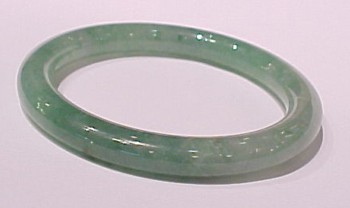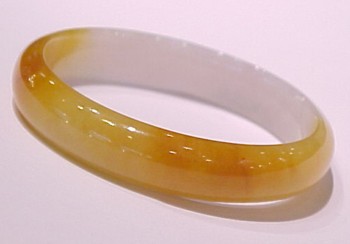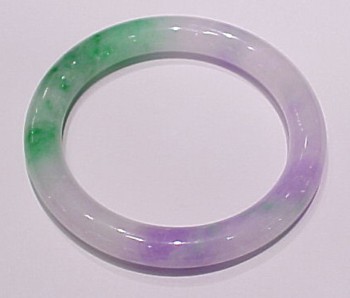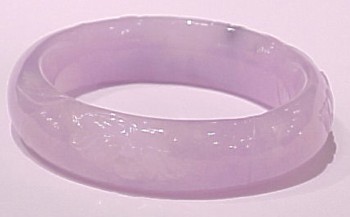
Ying Yu Jade
Burmese Jadeite Quality
If you have wondered why you can purchase "imperial green burmese jadeite A quality "on the eBay auctions starting at $10, and you see the "same thing" on this web site or others for a much higher price, you may experience some confusion. Although different sellers will make different claims, simply stated "A" refers to jade that has not been treated in any way; "B" has had some enhancement such as using acid to remove impurities, inclusions and/or some dye added for color; and "C" which has been so aggressively treated with acid that it not only removes the color but also makes the jade brittle, then polymers are inserted to give color and stability. Jade crafters have such sophisticated methods for making jade look good that only a gemologist can tell for sure. Only Burmese jadeite is graded A, B, or C. Indigenous Chinese jade, such as Xiuyan jade, is not graded this way.
Jade is also rated in three other categories: utility, commercial and gem quality. A certificate of authenticity is available for gem quality jade. Ying Yu Jade smooth jadeite bangles are "A" and a certificate is available. I prefer to purchase jade products myself, and I often purchase a rough piece of jadeite and have as many bangles as possible carved from it so customers have a choice of size in a bangle.
95% of the burmese jadeite that is sold is utility or commercial quality. It is further graded by A, B and C. Most people care more about price than quality, and want something that looks good and they enjoy. There is a Chinese saying, "Cheap price no good; Good no cheap price". These photos show utility grade rough, and a sample of an untreated utility quality bangle bracelet. Prices are usually under $100, but sellers do charge more and call it "A". Most carved bracelets are utility jade, although I order some that are higher quality. Carved bracelets must have characteristics that hold up to carving and won't crack during the process. If you buy a carved bangle that is real jade, you will notices some imperfections from the carving process, such as small nicks, chips or cracks that can't be polished out or disguised. It your carved jade bangle is perfect, and inexpensive, chances are it is made from marble or something other than jade.
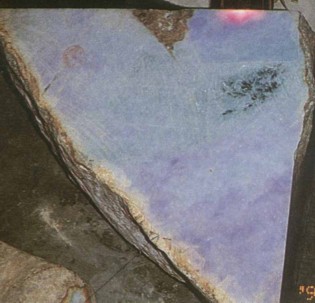
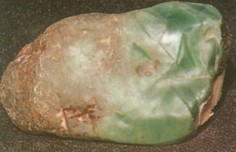
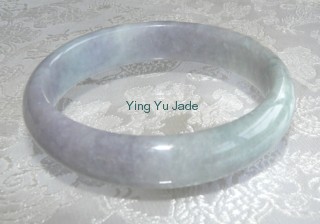
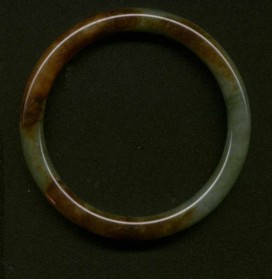
Gem quality is further graded by A, B and C. The photos below show the rough, and what you can expect a lavender bracelet to look like. Lavender and colored jade is very rare, and most of it is enhanced, and/or not real jade. Most of Ying Yu Jade is gem "A" quality. And be careful about purchasing jade that has certificate from China, as these are often "fake" certificates.
I often am asked about how the jade pieces are priced: what makes one more expensive than another. There is a Chinese saying that "diamonds and gold have a value price but jade has no price". Many factors are involved in jade pricing. When I buy a finished jade bangle bracelet, I pay what the seller asks after intense bargaining! What I look for first is color. I suspect any color other than green, and look very carefully at green color, too. I want to the color to look natural, and not appear odd where the color changes. I look at the outside to inside, and inside to outside. I use a chelsea filter to look at the color for enhancement. I look for the pattern of the jade stone, as I want to see "flowering" to show that it hasn't been bleached and see the natural stone. And I smell, as resin filler and dyes often have an odor. I use a refractor to test for genuine jade. I also like to see thickness between the inside and outside so I know the bracelet will be strong. And I look and feel for cracks on the surface. Jade will often have what appears to be cracks inside but is really just a natural part of the jade stone. If I find a carver who does good work, I will sometimes purchase a large piece of rough jade and have bracelets carved. That way I know I will get genuine and natural color jade, and the price will be much less than if I purchase a finished bracelet, so I can pass the savings on to my customers. I had lavender bracelets carved that sold in China for more than $1000 but I could sell them for about $300.
I have been trained in China to identify and certify jade, and can offer certificates for most of the jade I sell.
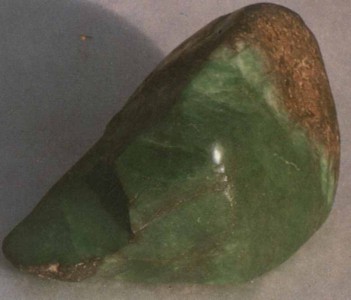
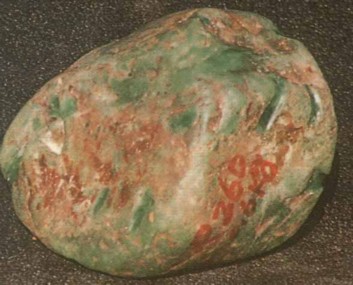
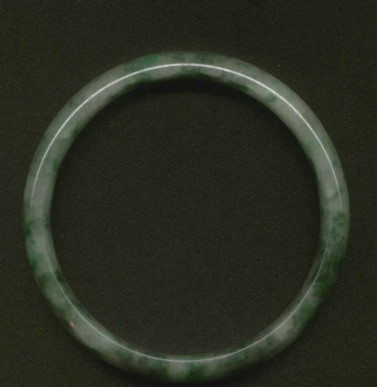
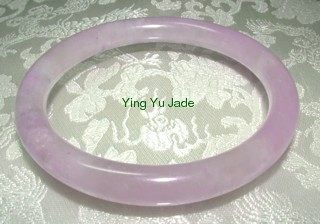
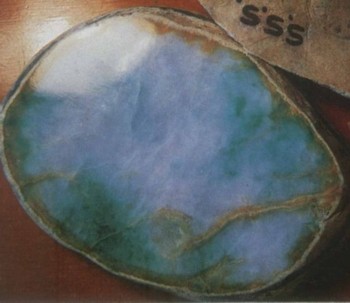

Which jade bangle bracelets below are natural color? Answers below
